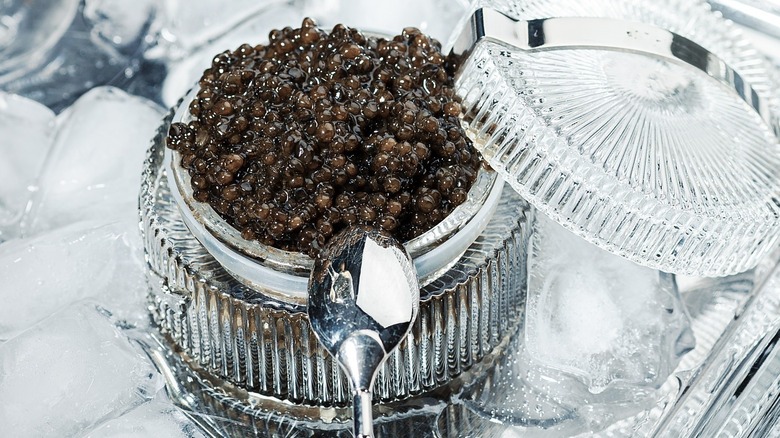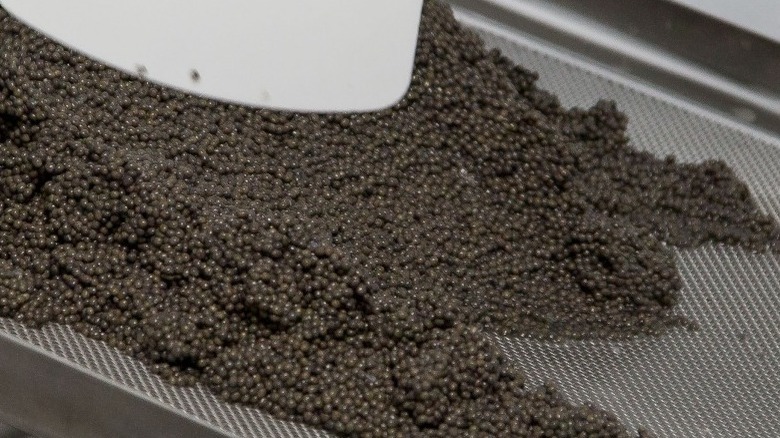The Truth About Caviar 'Bumps'
There has always been a connotation of decadence when it comes to caviar. And now, "bumping" it is the latest food trend in New York City, according to The New York Times. The practice has a mischievous ring to it and can get expensive — which is exactly what makes it so attractive.
"Bumping" refers to a method of consumption where a small dollop of unfertilized fish eggs is placed on the back of the hand, between the index finger and thumb. The indulgent gourmand (or newbie) will then lick it off their hand in a single movement. This is a step away from the traditional method of consumption, where caviar is served on blinis (a Russian-styled pancake) or thinly sliced buttered toast with chives and crème fraîche. The extra ingredients are good ways to improve the quantity of your dish, especially because caviar is such an expensive delicacy.
Still, many connoisseurs believe the best way to eat caviar is plain. And while bumping caviar is an emerging trend, it's not new. For instance, roe buyers use this method to sample caviar before purchasing it from fishermen, according to the Times.
Why is caviar so expensive?
All caviar is fish eggs, but not all fish eggs are caviar. Caviar comes from sturgeon, which occurs naturally in the Caspian Sea, Black Sea, large European lakes, the Pacific Northwest, and the Southern Atlantic, according to Imperia Caviar. Any other fish egg is referred to as roe.
The priciest caviar on the market is that of the beluga, which also belongs to the Acipenseridae family, making it a sturgeon. The going rate for this exclusive type of caviar is between $200 and $300 per ounce, according to Caviar Lover.
In 2005, the harvesting of wild caviar was banned because of overfishing, per Bloomberg. But the appetites among those with a taste for the finer things in life prevailed. As such, there was still a demand for caviar in the food market, and America's answer to this came in the form of farmed caviar. Today, it can be enjoyed in the trendiest of New York restaurants (as per The New York Times) for $20 a "bump."

